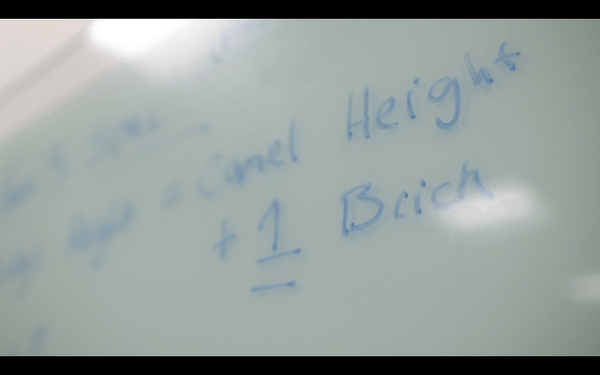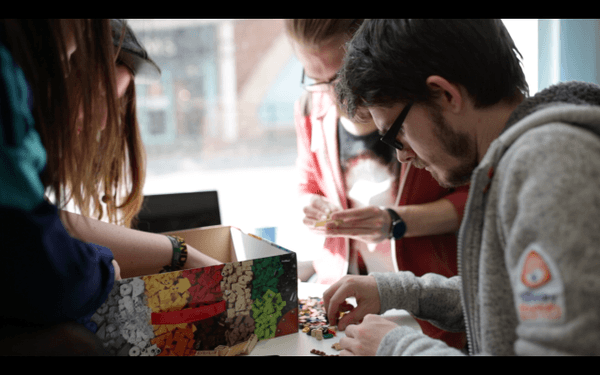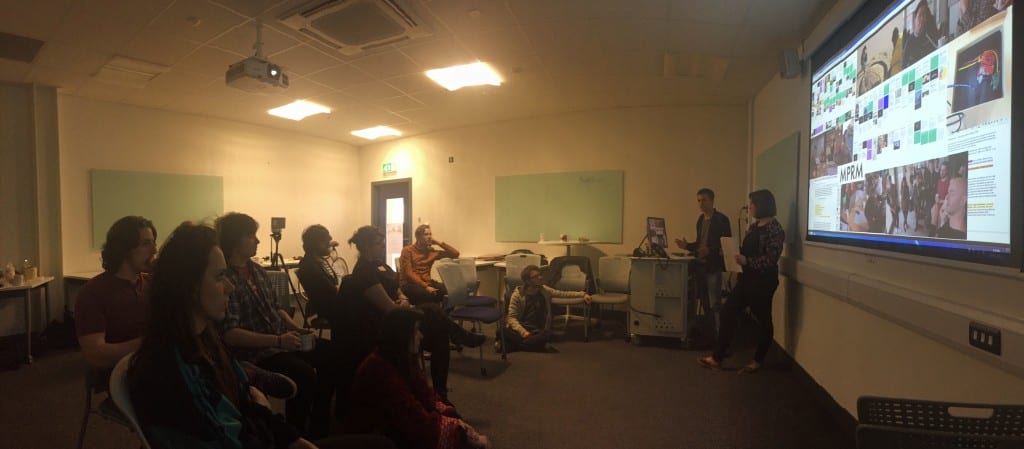After a welcoming cuppa, the first day of the @WebWeWant workshop started with an introduction to the key themes, outlining the schedule for the workshop and discussing the project brief. The students watched an interview with Edward Snowden (with John Oliver from Last Week Tonight), which was useful for addressing public apathy towards the mass surveillance of digital communications (in both a military and commercial context).
#Twitter_Bricks
With the key themes resinating in the participants minds, we thought we’d launch straight into the first workshop task… Twitter Bricks!
Usually, when a group of strangers are to work together on something (be that forced or otherwise), there is usually some team-bonding task led by a facilitator that gets participants thinking and working as a unit. The idea is that communication becomes more fluent as they are all experiencing the same task simultaneously. These tasks traditionally take the form of some role-play scenarios, or if you’re lucky enough to be outdoors; building a raft out of planks of wood, string and some old oil drums.
We wanted to try something different. For a start, we (the co_LAB team) wanted to participate as equals with the students. After-all, part of the co_LAB intensive workshop ethos is to remove the notion of “us” and “them” wherever possible. Secondly, we wanted to introduce an element of creative problem solving, and we wanted to do this based on a recent experience when some of the team visited Copenhagen. Here, in the home country of Lego, they use the wondrous little plastic bricks to help with all kinds of business and creative problem solving. We thought we could take this a step further and use Lego for a collaborative creative problem solving task. Twitter Bricks was born.

The idea is that 3 teams work together to recreate the co_LAB logo in Lego. They were assigned a third of the actual logo (see above) but instead of just recreating it flat, each group had to turn their “node” into a tower and their “connections” into a span. The 3 segments would then have to join together. Sound easy? Well if all 3 teams were to work together in the same room then yes, it probably would be very easy. However, here’s the twist! The 3 groups are separated by being in different rooms and so therefore unable to communicate. They all had the same briefing, they all saw the same plan (above) and all had the same instructions and rules.
Actually the rules were quite simple:
- no direct communication with the other groups BUT you can communicate with them via a Twitter hashtag
- the spans have to connect (denoted by the white lines in the diagram above)
- a Lego car has to be able to travel along the entire length of all the spans
- a Lego boat (which later became a camel) has to fit underneath each span
This still might not sound all the difficult but think about it, the spans have to be roughly the same width, have to be EXACTLY the same height and communicating even these simple dimensions using only Twitter isn’t as straight forward as you might think.
After the strict 1 hour time limit was up, each group carefully carried their segment back into the main room to connect the whole structure together:
Incredibly, the structure did connect and the car could pass across the entire span with no problems. The camels could fit underneath the spans too making this little exercise a fantastic success. Yes, there were teething issues, but this was an idea that had never been tried before (to our knowledge) so there was no telling if it would work or not. I guess we were always going to get something which could be cobbled together but the success can be measured by how little modification it takes to connect the spans. In this instance, hardly any was required.
After bonding over pizza, the students groups discussed the research they collaboratively sourced during the pre-workshop phase. The students were asked to respond to a series of questions and present their findings to the rest of the group.
Collaborative Practice Based Research
To contextualise the co_LAB approach, it was important for us to situate the involvement of the students within a wider set of critical issues. To address this, postgraduate students Louise Lawlor and Andy West gave an insightful talk about their research and experience with the newly revalidated LSFM Masters programme (which explores an experimental approach to blending theory and practice).
The use of practice-based research methodologies, collaboration and the utilization of public space are not only fundamental to co_LAB’s manifesto, but are also part of a more critical response to developments and approaches in Humanities research and also aligned to the Student as Producer initiative run by the University of Lincoln.
The talk contextualised a series of developments and symptoms mapped by a variety of scholars from the crisis of empirical research to the marketization of the University. Drawing upon the experiences from their own postgraduate research using practice based research methodologies and collaborative practice, which can breakdown the boundaries of a classroom. For the participants of co_LAB, the active and experimental approach to learning can attune them to new ways of thinking about and understanding the themes of the project.
We feel this gave the students a critical insight into a range of problems when approaching methodologies and gave them a chance to not only see the project of co_LAB as something creative and collaborative, but as a wider response to important developments in academic research and public engagement.
The day ended with a lively discussion, recapping some of the core themes and research that was covered throughout the day. This resulted in the formation of some initial ideas which the students will be developing throughout the project.





